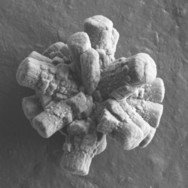|
A big challenge in predicting the toxicity of chemicals is knowing how a chemical is changed through the natural and protective processes of the body--such as absorption, distribution, metabolism and excretion (ADME)--after a person is exposed to it. From there, scientists need to understand what fraction of the original--or changed--chemical ends up in the specific part of the body that ultimately results in a health effect. After all, a healthy human body is quite effective at eliminating chemicals that it doesn't need, and naturally protecting against their harmful effects. So, understanding which chemicals linger in the body long enough to cause harm, and where in the body they end up, is important. Below we detail exciting progress EPA has made in addressing these challenges through exposure-dose-response modeling:
 Innovations in ADME Predictions
A recent paper by EPA scientists, Essential set of molecular descriptors for ADME prediction in drug and environmental chemical space, investigated whether pharmaceutical and environmental chemical domains overlap sufficiently to allow their molecular information to be combined to build better models to predict chemical toxicity.
This paper provides a well curated set of simplified molecular input line entry system (SMILES) notations, and associated molecular descriptors, for 670 drugs and 239 ToxCast Phase I chemicals. A user-friendly workflow model in the Konstanz Information Miner (KNIME) platform is also available for QSAR/QSPR modeling. Users can relate other chemicals to the available training data to predict ADME properties with any available chemicals and molecular descriptors. These predicted properties can be used to cost-effectively conduct preliminary toxicity assessment on data-poor chemicals. Go- test it out for yourself!
|
 Having Better Exposure and Dose Information Helps Improve the Predictive Power
In a paper published in Environmental Science and Technology, EPA scientists developed a high-throughput risk prioritization framework that integrates pharmacokinetic (PK) properties, high-throughput screening, and computational exposure data. This approach increases the confidence of in vitro and in silico methods to predict adverse toxicological response in a whole organism. Leonard et al. present a case study using chemicals which effect neurotransmitter (acetylcholinesterase (AChE) inhibitors) to evaluate how uncertainties in predicted exposure concentrations or PK properties influence prioritization of chemicals for further testing. The results demonstrate the ability of the framework to prioritize chemicals based on their activity in high-throughput assays, and reveal how even in limited exposure or PK information can improve confidence for chemical prioritization.
|
 What's age got to do with it?: Life-stage specific PBPK modeling
Since developing fetuses and infants are especially sensitive to chemical exposure, a physiologically-based pharmacokinetic (PBPK) model was developed to describe if and where chemicals end up in the body at critical life-stages: pregnancy, fetal, neonatal, infant and adulthood. EPA scientists integrated the life-stage specific PBPK model that had existing data on in vitro high-throughput screening assays, with an adverse outcome pathway on embryonic vascular disruption. This universal model takes into consideration important biologically relevant factors and real-life chemical exposure levels to create a framework applicable to chemicals of interest to children's environmental health.
|
 Interactions of nanomaterials with organic pollutants
In a recent study, EPA researchers used novel analytical techniques to examine, in real time, how the presence of engineered nanomaterials can affect the mobility and bioavailability of other toxins already in the environment. Specifically, the researchers examined the impact of nanostructured-TiO2 and multi-walled carbon nanotubes on the adsorption and dispersion of persistent organic pollutants (POPs), including polycyclic aromatic hydrocarbons (PAHs) and insecticides.
The adsorption of these contaminants to the nanomaterials increased the concentration of the contaminants in the aqueous phase. The results show that engineered nanomaterials can significantly influence the adsorption and dispersion of low water soluble contaminants. This chemical redistribution and association can result in changes to the environment fate and transport of engineered nanomaterials and the bioavailability of adsorbed contaminants, increasing level of complexity of risk assessments.
|
 Organotypic Modeling through STAR Grantees & EPA Scientists:
In December 2014, CSS and the National Center for Environmental Research (NCER) awarded Science to Achieve Results (STAR) grants to four universities. The grants stimulated research in Organotypic Cell Modeling technology. Sometimes called 'organ-on-a-chip', in vitro systems of three-dimensional cultures that model biological interactions from a complex organ or tissues such as the brain, liver, kidney, testis, breast tissue, heart and neurovascular system. Organotypic Cell Models provide an innovative, non-human testing platform for the interactions of chemicals with key biological processes in the human body. These models provide key insights to screening toxicological outcomes in humans through a non-human chemical testing alternative.
The STAR grantees at University of Wisconsin--Madison and Vanderbilt published papers showcasing their initial results of cooperative cutting-edge research. An EPA-NCER funded center at the University of California--Los Angeles also published a paper on nanotechnology. CSS is excited to pursue more innovative collaboration with the Organotypic Cell Modeling Centers for Predictive Toxicology and Center for Environmental Implications of Nanotechnology STAR grantees.
|
Small Business & EPA--Innovating Together
EPA announced the release of its Small Business Innovation Research (SBIR) Phase I Solicitation to support the development and commercialization of innovative environmental technologies. EPA is calling for small businesses to apply for Phase I awards up to $100,000 to demonstrate proof of concept in the following topic areas: air and climate, manufacturing toxic chemicals, water, water and homeland security, and greener buildings. Successful Phase I companies are eligible to apply for Phase II funding, up to $300,000 for two years with a commercialization option of up to $100,00 to further develop and commercialize their technologies.
For general information on how to apply visit epa.gov/sbir/how-apply-sbir-contract.

 National Academy of Sciences: Advancing Understanding of the Implications of Environmental-Chemical Interactions with the Human Microbiomes | September 25-26, 2016
The National Academy of Sciences (NAS) committee will convene for the first time to investigate Advancing Understanding the Implications of Environmental-Chemical Interactions with the Human Microbiomes on September 25-26 in Washington, DC. More information can be found here.
|
 Society of Environmental Toxicology and Chemistry (SETAC) 37th Annual Meeting | November 6-10, 2016
EPA scientists will showcase their research through symposia, workshops, platform presentations, and poster sessions at the 2016 SETAC 37th Annual Meeting in Orlando, Florida on November 6-10. EPA's exhibit booth will feature demonstrations of online EPA research tools and provide SETAC participants with information about research, career opportunities, and available grant funding. More information about the SETAC Annual meeting and complete conference materials are available on the SETAC webpage.
|
|













